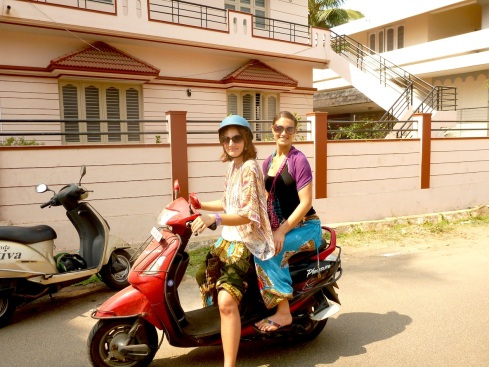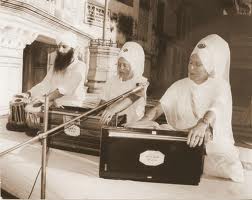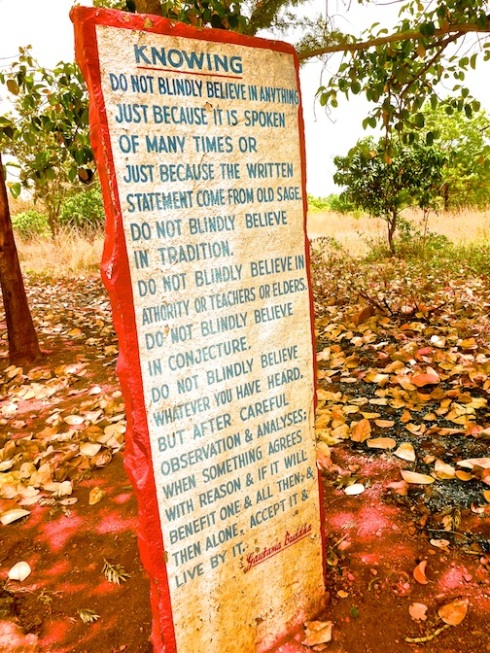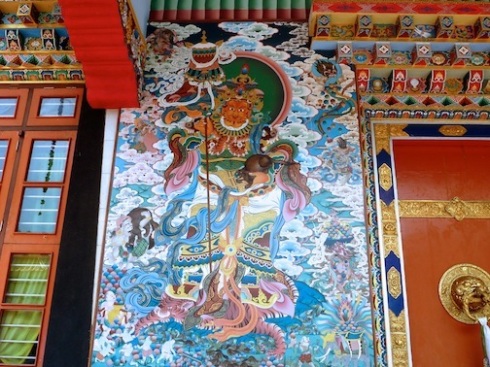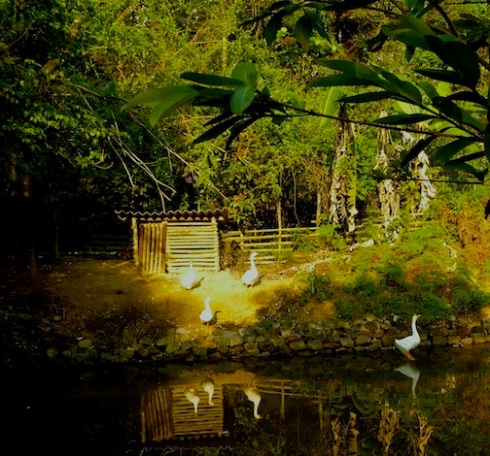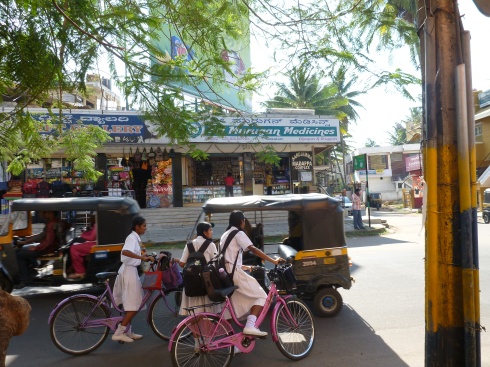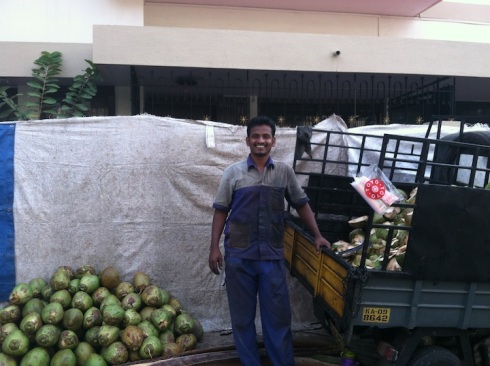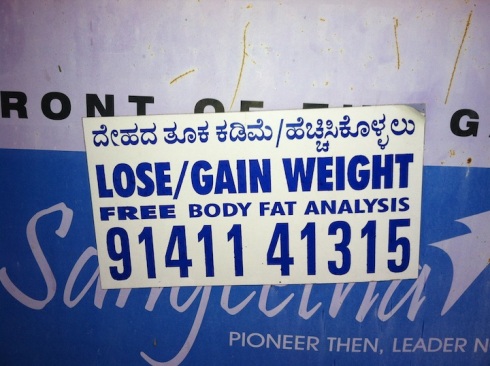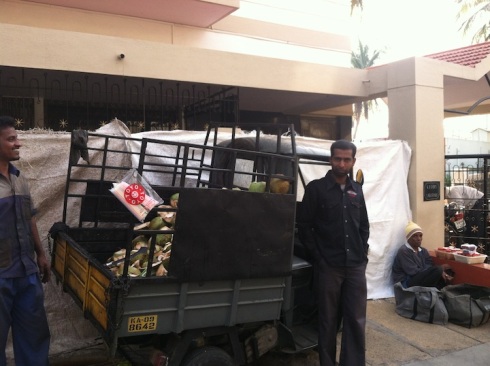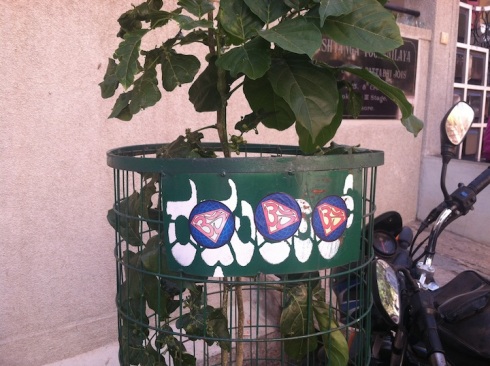Lists and note taking are awesome. Without the ability to write things down, I would go to the market and buy just a bag full of apples every time.
So on our last day in Mysore, here’s a list of the 8 best things about it.
Or had super-fresh salad from the Western Ghats:
Indian food is not spicy bacterial mush. There’s amazing stuff here.
7. The Animals. Street dogs? They are plentiful and amazingly sweet. There are also street horses. And goat herding on major roadways:
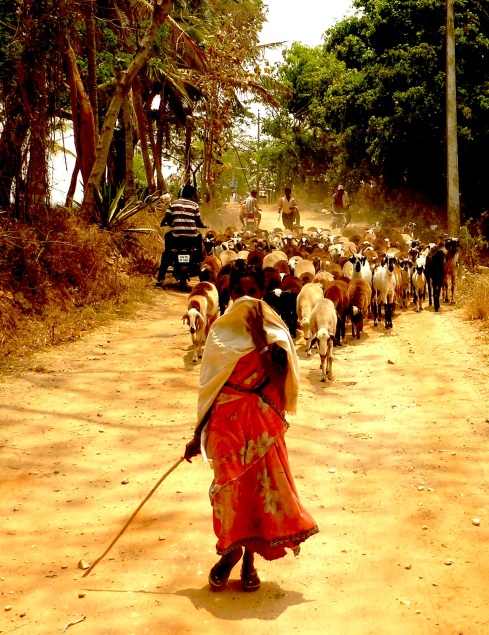
And of course, the street cows. I’ll really miss them all.
6. The Outfits. Western dress in Mysore has been variously described as “pre-teen pajama pants” and “lesbian suburban mom.”
Whichever style you choose, it’s not going to be flattering. But that’s kind of the idea- showing shoulder here is really risqué, to say nothing of those see-through LuluLemon pants. Between the dress code, the heat, and everyday sweaty practice, your vanity is so forcefully heaved out the window that even the most meticulous Southern California surgery still leaves certain bones a tiny bit crooked when you look really close. For most of us, this is a very good thing.
5. The Conversations. Every conversation here begins with one phrase:
“How was your practice?”
People really want an actual detailed answer, complete with reasons “the practice” was exceptional (“got a great adjustment”) or half-power (“ate proper dinner last night at 6pm”). Yoga people are pretty open about their bodies in general, so a town full of them is bound to have regular discussions on digestive issues, feminine problems, and other things that we don’t usually talk about. While it’s probably not normal to have an in-depth brunchtime conversation about Ladies Holiday with a tableful of mixed company you’ve only just met, there’s an odd bonding that occurs when everyone freely opines upon such intimate subjects. If there’s a word for missing something that is often unpleasant but strangely liberating, I would love to know and use it here.
4. The Parties. There’s virtually no booze in India. Even at fancy hotels, the specialty drinks taste like Zima. So you’ve got to get creative.
There’s always interesting conversation that’s not about your practice or your body. Ask someone where they’re from: there’s a high likelihood that they’ll pause, either trying to remember or figuring out the easiest way to say something like “nowhere…and also, everywhere.” Los vagabondos tell the best stories. There’s lots of that traveler speak around town: English vocabulary with other-language syntax, using the fewest words and most movement possible for maximum cross-cultural understanding. I love that language, and hearing it almost every day is something to notice and relish.
3. The Day Trips. The pictures sort of speak for themselves. There are weird Ashrams:
Cool temples:
And even fully-contained sustainable farms close by:
2. The Yoga. Obviously, right? Mysore is an industry town in the same vein as Los Angeles: instead of hearing people talk about production schedules and casting over lunch, it’s about breathing exercises and Sanskrit translation. Gokalum is the very rapidly gentrifying epicenter for those that practice with the Jois family. Laxmipuram, home of the old Jois school and many other houses of study, is where all the neo-hipsters have fled to (think Williamsburg, five years ago).
People come here from all over the world because the best teachers teach and study here. It’s frequently overheard among yogis: “I’ve just gotta get back to Mysore.” It’s a cycle: Come practice here, meet other teachers, go home and teach to make money to come back. The time between October and March is even called “The Season.” Which brings me to the #1 best thing about being in Mysore…
1. The Lifestyle. Imagine a town where everything was made by the best really-real-hippie people you’ve ever met: people who will only shower once a week-with gray water- because there’s a drought. Who can tell you the names of every plant species on their mountain, want to barter for everything, and have put thousands of hours into sourcing the best free-trade organic cotton for their clothing line. You get the feeling that lots of the people here (the yoga people and the locals) just practice hard, don’t brag about it, and quietly try to be the best version of themselves possible. It makes you realize how much yoga actually IS making the world a better place.
So see you later, YogaTown. For those of you who are still sad to leave, imagine Mysore is calling this after you as it waves farewell:
“Remember me and smile, for it’s better to forget than to remember me and cry.”
― Dr. Seuss
Merrin Muxlow is the author of the fabulous yoga blog Yoga for Unicorns. Merrin began a consistent Yoga practice in 2005 and she has been teaching Yoga since 2008. Since that time she has trained in several different styles (Vinyasa Flow, Hatha, and Hot Yoga), taken seminars and workshops around the world, and has learned to smile and breathe through challenging poses she once only dreamed of attempting. She is currently studying yoga in India and we look forward to her return.




